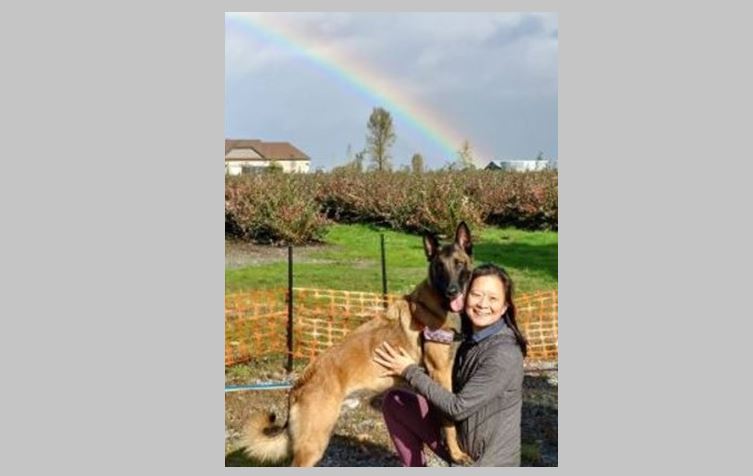PUBLISHED: 24th August 2020

By @PALB2Previvor
I knew for decades that I had one relative who was diagnosed with breast cancer at the age of 41. Beyond that, my family medical history was unavailable to me. When I underwent my first screening mammogram at the same age, it was more of an inconvenience than a source of worry. Thankfully, my mammogram was fine.
I also knew that, while East Asian women have lower rates of breast cancer, when breast cancer does occur, it can happen at a younger age and is often more difficult to treat.
For me, these and other life experiences led to the conclusion that I needed a more definitive, honest picture of my personal risk for breast cancer. I decided to have genetic testing. I wanted to know and understand my potential cancer risk since I had little information about the cancer in my family. If I had more information, it would allow me the opportunity to proactively outsmart cancer, rather than react to it if it should occur.
I tested positive for a PALB2 genetic mutation and my risk for breast, ovarian and other cancers was elevated. I was grateful to hear this news from a genetic counselor who could explain the details. Six months after learning this, I had a mastectomy and oophorectomy and my breast and ovarian cancer risks were reduced to lower than average levels. Plans are in place to address any additional cancer risks associated with this mutation.
A little over a year later, I heard that my relative died of metastatic breast cancer, almost three decades after her initial diagnosis and treatment. I consider myself incredibly lucky. The opportunity to have genetic counseling and testing, coupled with having solid resources in place, was my lucky break. My “luck” has brought me immeasurable peace of mind for which I am deeply grateful.
PALB2 Previvor
5 Comments
January 16, 2024
Hi! Thank you for sharing your story! I also have the PALB2 mutation and am strongly considering a risk reducing double mastectomy and oophorectomy. Can you tell me, did you have reconstruction with your mastectomy? If so, what procedure did you go with for reconstruction? Thank you so much!
Allison Wilson
Reply
January 18, 2024
Following this answer, since I am in the sane situation. Several relatives with BC at this moment, some in the past, and several of us diagnosed with PALB2. Organizing my PM now. Despite of having already breast implants, I am quite scared with surgery.
Barbara
Reply
January 15, 2025
I did have reconstruction. However, my luck continued in that I was offered and approach that isn’t that common, “reversed expansion” https://www.phillipblondeel.com/breast-reconstruction.html. Some of the requirements include the ability to tolerate & have insurance cover / finance multiple surgeries, (more surgeries than implants or DIEP based reconstruction).
PALB2 previvor
Reply
January 25, 2021
Thank you for sharing your story! I’m currently waiting for my results. My grandmother and mother both had BC and my mother recently tested positive for PALB2. Here’s my question-what was your risk percentage of getting breast and ovarian cancer?
Erin
Reply
July 16, 2022
Hi Erin, Apologies for such a delayed response. Estimating risk reliably is dependent on having large amounts of data. Because PALB2 mutation data currently isn’t as “big” as the BRCAs, risk estimates are going to be less “solid” (by complex statistical methods) than the BRCAs. Also, I did not have much family history to go on, which makes risk estimates less reliable than for those with larger families (more data). For my decision-making, I focused on current knowledge is on its function, the known roles PALB2 plays in cells as much (if not more than) statistics. I also knew my specific mutation & how it affects one copy of the gene in each of my cells (humans almost always have 2 copies of PALB2). The full name of PALB2 is “Partner & localizer of BRCA2”, BRCA2’s helper. So I *loosely* used BRCA2 statistics as a guide, leaving space for PALB2 risk estimates to potentially be lower. Allison Kurian MD & Kerry Kingham, M.S., C.G.C. had a good presentation on the numbers & risks (data has since grown & evolved since that video was posted on YT). There may be more Dr. Kurian presentations in the FORCE past conferences collection. Another factor that can influence risk is that very generally speaking, OC tends to show of a later in life (not a hard & fast rule, just a rough guideline) relative to BC. But BC cells can escape early & then go dormant. Even when BC is caught early/treated, there’s significant (to me) risk of recurrence decades later, often found at advanced stages. For OC I was told roughly 10% based on the data at the time (in contrast w/BC, no known trends of early escape). Finally, getting OC & finding OC are two different events. The latter can happen much, much later when options & prognosis are more challenging both physically & financially. Hope my personal experience & thought process is helpful.
PALB2previvor
Reply